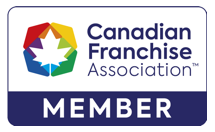Since June 23, 2022, it is easier for Canadian registered charities to give funds directly to non-qualified donees inside or outside of Canada (including foreign charities or non-profits). This can be done through the new qualifying disbursements rules. The previous own activities rules of the CRA remain in place and are still useful in appropriate circumstances.
Ways a Registered Charity Can Use Its Resources
The Income Tax Act requires that a charitable organization devote all of its resources to activities that further a charitable purpose. A registered charity can only use its resources (funds, personnel, and property) in two ways only:
- on its own activities or programs through its own staff and volunteers, or through an intermediary if it exercises direction and control;
- on making qualifying disbursements through gifts to qualified donees or grants to non-qualified donees (grantee organizations)
A grantee organization includes a person, club, society, association or organization or prescribed entity, but does not include a qualified donee.
Charity Requirements to Make a Grant to a Non-Qualified Donnee
To make a grant to a non-qualified donee, a charity must meet certain requirements:
- ensure that its resources are exclusively applied to charitable activities that further a charitable purpose of the charity; and
- maintain sufficient documentation in its books and records to show this, including the purpose for which the grant is made
How to Meet Legislative Requirements
Since a charity is responsible to show it meets the legislative requirements, it can satisfy a potential CRA audit or inquiry by:
- conducting and documenting a due diligence review of the grantee
- developing a clear, complete, and detailed description of the grant activity, preferably in writing, in conjunction with the grantee
- entering into a written agreement, and implement its terms
- monitoring the grant activity, including obtaining written reports from the grantee
- making periodic transfers of resources to the grantee, based on demonstrated performance, and withhold future transfers if necessary and appropriate under the circumstances of the grant, and
- having the grantee track the charity’s resources separately in its books and records
Since the risk associated with each grant is different, a charity should use appropriate measures to meet these requirements. If the grant risk is higher, the measures set out in the grant agreement should reflect this. The charity should clearly document its accountability measures in its books and records.
A charity’s relationship with a non-qualified donee may evolve. A relationship with a non-qualified donee can be converted from an intermediary to a grantee relationship provided this change is documented in the charity’s books and records, and at the time of the change, all necessary requirements are met.
The Charity and Not for Profit group at Mills & Mills LLP can help your organization understand the new qualifying disbursements rules and determine whether your charity should use its funds and other resources on its own or through a non-qualified donee as an intermediary or a grantee.
At Mills & Mills LLP, our lawyers regularly help clients with a wide range of legal matters including business law, real estate law, estate law, employment law, health law, and tax law. For over 130 years, we have earned a reputation amongst our peers and clients for quality of service and breadth of knowledge. Contact us online or at (416) 863-0125. The material provided through the Mills & Mills LLP website is for general information purposes only. It is not intended to provide legal advice or opinions of any kind.

 2 St Clair Ave West
2 St Clair Ave West


